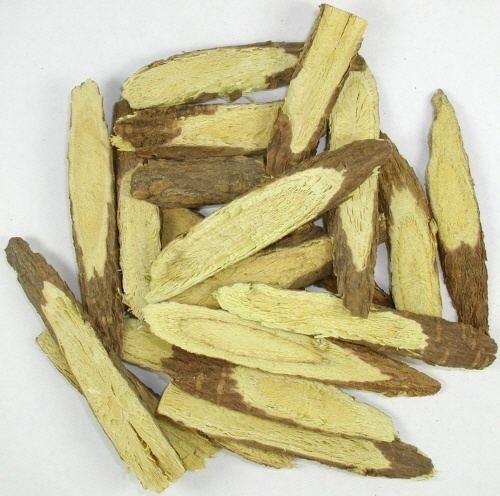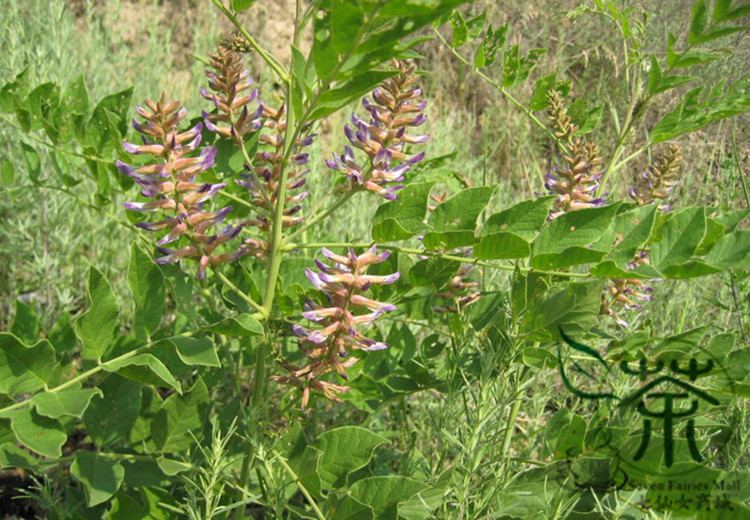Rank Species | Genus Glycyrrhiza Higher classification Licorice | |
 | ||
Similar Bai zhu, Wolfiporia extensa, Female ginseng, Ligusticum striatum, Rehmannia glutinosa | ||
Medical vocabulary what does glycyrrhiza uralensis mean
Glycyrrhiza uralensis, also known as Chinese liquorice, is a flowering plant native to Asia. It is used as a sweetener and in traditional Chinese medicine.
Contents
- Medical vocabulary what does glycyrrhiza uralensis mean
- Chinese licorice glycyrrhiza uralensis chinese meds com
- Medicinal uses
- Side effects
- References

Chinese licorice glycyrrhiza uralensis chinese meds com
Medicinal uses

Liquorice root, or 'radix glycyrrhizae', is one of the 50 fundamental herbs used in traditional Chinese medicine, where it has the name gancao (kan-tsao; Chinese: 甘草, pinyin: gāncǎo). It is usually collected in spring and autumn, when it is removed from the rootlet and dried in the sun. Liquorice root is most commonly produced in the Shanxi, Gansu and Xinjiang regions of China.

As well as traditional Chinese medicine, liquorice root is used in Greco-Arab and Unani medicines, as well as in the traditional medicines of Mongolia, Japan, Korea, Vietnam, Pakistan, India and other Asian nations. Its Arabic name is 'Asal-as-Soos' and in Pakistan / India it is referred as 'Mulethi'. The Greco-Arab (Unani) Medicine recommend its oral use after removal of external layer to avoid side effects. People with heart conditions or high blood pressure should avoid ingesting extensive amounts of liquorice, as it can further heighten blood pressure and lead to stroke.
A Chinese legend tells how liquorice root first came to be used in traditional Chinese medicine:

A long time ago, there was an old doctor with excellent medicine skills. He opened his medical office in his home with a few students as assistants. One time, he had to leave home for a couple of days, and before the old doctor left, he gave his students several drug packages in order for them to help out with the home patients. The old doctor did not return home on time, and the medicine he left for his students were running out, and there were still many patients to cure. In the backyard, however, there were some chopped and dried grasses used for boiling the water left, so the students administered them to the patients and told them that it was their teacher’s medicine. Magically, the patients who were suffering from spleen and stomach problems, coughing phlegm, or with sore throats and ulcers were cured from this medicine. These dried grasses were liquorice roots. Since then, liquorice roots have been widely used in Chinese medicine and healing.
Side effects

Liquorice root contains glycyrrhizin, which can cause high blood pressure, salt and water retention, and low potassium levels; it could also lead to heart problems. Patients who take liquorice with diuretics or medicines that reduce the body’s potassium levels could induce even lower potassium levels. Taking large amounts of liquorice root could also affect cortisol levels as well. People with heart disease or high blood pressure should be cautious about taking liquorice root. Pregnant women also need to avoid consuming large amounts of liquorice root.

